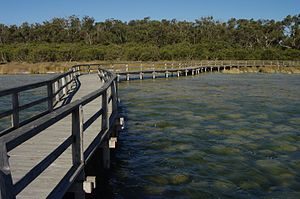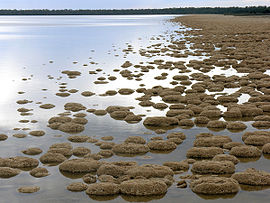We help our clients create wealth through property management. Contact your local Elders Real Estate property manager to understand your property's investment potential and how we can help you secure the best possible return.
Find your local agent
Lake Clifton is a small town located on the east side of the lake of the same name in the Peel region of Western Australia just off the Old Coast Road, between Mandurah and Bunbury at the north end of the Yalgorup National Park. At the 2011 census, Lake Clifton had a population of 406. Lake Clifton is named for Marshall Clifton, who originally arrived in Western Australia to manage the settlement scheme at Australind, and was later a member of the Legislative Council. Explorers Dr Alexander Collie and Lieutenant William Preston RN first came across what are now Lakes Preston and Clifton while exploring the coastline between Mandurah and Bunbury in 1829. Lake Clifton contains basic accommodation and shopping, and a community hall offering a range of activities. A couple of roadhouses for passing trucks and motorists are located on Old Coast Road, while rural residential estates have sprung up at Tuart Grove. The Yalgorup National Park was established in the 1970s to protect the coastal lakes, swamps and tuart woodland in the area. The area is also central to waterbird migration patterns. At the edge of Lake Clifton, rock-like structures called thrombolites (similar to stromatolites) can be seen, built by tiny micro-organisms believed to resemble the earliest forms of life on Earth. Scientists have suggested their presence here may be due to upwellings of fresh groundwater high in calcium carbonate. An observation walkway has been constructed to allow visitors to view these fragile structures. An action has been started to list Lake Clifton as a World Heritage Site by the French artists “Art Orienté objet” in 2011. The main road route through the area is the Old Coast Road (Highway 1; Mandurah to Bunbury). Perth-Bunbury buses operated by TransWA under the Public Transport Authority also stop here. It is also the terminus of the new Forrest Highway

